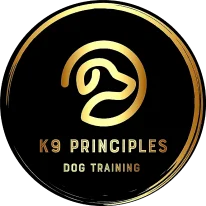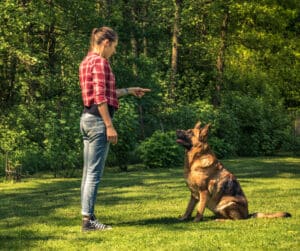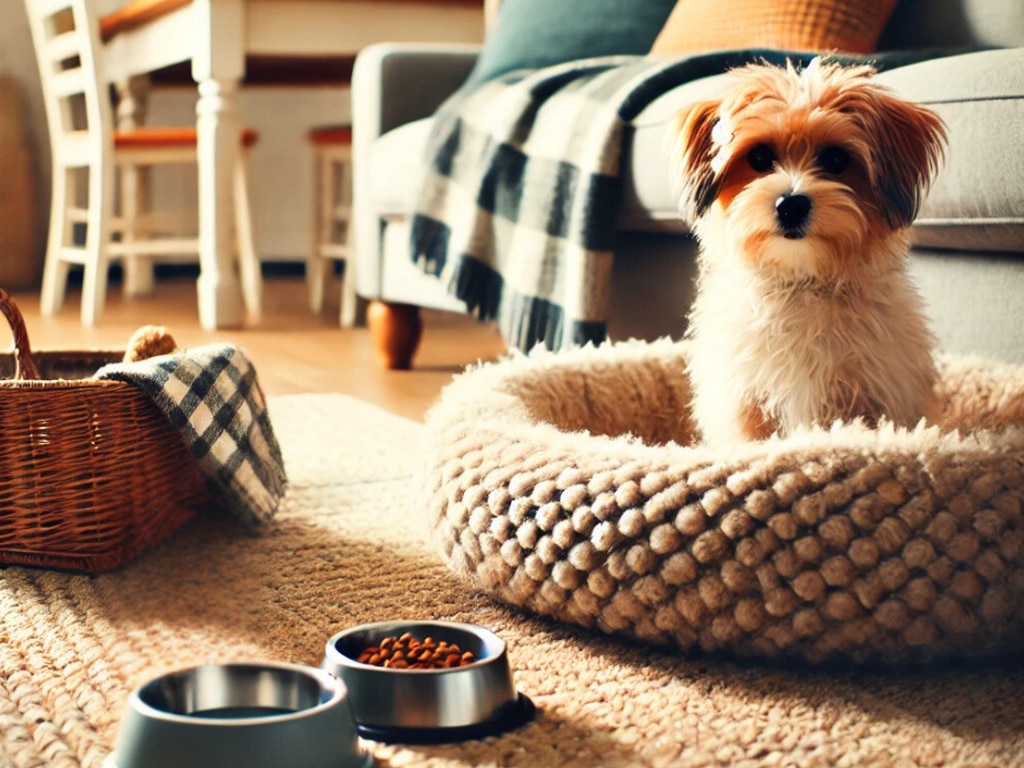Bringing a new dog into your home is one of life’s most rewarding experiences, but it’s also a commitment that requires thoughtful preparation. The moment you decide to welcome a dog, the training process begins. Yes, even before your dog arrives. Why? Because laying a solid foundation ensures your dog feels secure, knows what’s expected, and settles in smoothly. Preparation is about more than buying supplies; it’s about understanding how to build trust, establish boundaries, and create a positive environment from day one.
A lack of preparation can lead to misunderstandings and behavioural issues. For first-time dog owners in Hamilton, it’s essential to start with a plan. From setting routines to creating a safe home environment, every decision you make beforehand lays the groundwork for effective dog training in Hamilton.
Understanding Your Future Dog’s Unique Needs
Every dog has its own personality, but breeds bring predictable traits. Are you adopting a high-energy Border Collie or a laid-back Basset Hound? Knowing this beforehand can prevent mismatched expectations. For instance, energetic breeds require mental stimulation and space to burn energy, while calmer breeds may thrive in quieter settings. If you’re unsure about the mix of traits in a rescue dog, observe their behaviour during visits or speak with shelter staff.
Beyond breed traits, think about your lifestyle. Do you work long hours? Then crate training might be invaluable. Love outdoor adventures? Focus on teaching a solid recall early. By considering your future dog’s specific needs, you’re not just preparing for training but also ensuring a harmonious match. Whether it’s selecting the right training tools or planning sessions, understanding your dog is central to successful Hamilton dog training.
Creating a Dog-Friendly Home
Your home will be your dog’s sanctuary, and it’s essential to make it as welcoming and safe as possible. Imagine bringing a toddler into your home—you wouldn’t leave sharp objects lying around or fragile items within reach. Dogs require similar care.

Start by assessing your home for potential hazards. Secure cables and cords to prevent chewing accidents. Remove small objects like coins, rubber bands, or batteries that your dog might swallow. Toxic substances, including cleaning supplies and certain plants like lilies or poinsettias, should be stored out of reach. Even simple items like chocolate or grapes, which are toxic to dogs, need to be kept well away.
Designate specific areas in your home for your dog’s activities. Create a cosy sleeping zone with a comfortable bed, ideally in a quiet corner where your dog can retreat to when they need rest. Set up a feeding area with sturdy bowls to prevent spills, preferably in a spot that’s easy to clean. For play and exercise, ensure there’s enough room for your dog to move around safely, especially if they’re energetic.
Crate training is often misunderstood but can be a game-changer for creating a secure environment. Choose a crate that’s large enough for your dog to stand, turn, and lie down comfortably. Add soft bedding and a few toys to make it inviting. The crate should be positioned in a space where your dog can still feel part of the family—not isolated. Crates mimic the den-like environments dogs find comforting and are invaluable for house training.
If you have a backyard, ensure it’s fully fenced and free from hazards. Check for gaps where a curious dog might escape and remove any sharp objects or toxic plants. Outdoor spaces are perfect for exercise and play but should always be supervised until you’re confident your dog knows the boundaries.
Creating a dog-friendly home isn’t just about physical safety. It’s about fostering an environment that supports training and builds trust. With a safe and structured space, you’re providing the foundation for successful Hamilton dog training, helping your dog adapt quickly and thrive in their new surroundings.
Gathering the Right Supplies
Heading to the pet store can feel overwhelming. Focus on essentials like food and water bowls, a durable lead, and a well-fitted collar. Don’t forget a name tag with your contact details. High-quality dog food suited to your dog’s age and breed is vital for their health and energy levels. Toys are not just for fun; they’re critical for mental stimulation and redirecting destructive behaviours. And yes, invest in a comfortable crate, even if you’re unsure about crate training—it can serve as a safe retreat.
Selecting the right tools can streamline your training efforts. If you’re unsure where to start, K9 Principles offers guidance tailored to your dog’s specific requirements, ensuring you’re equipped for success in Hamilton dog training.
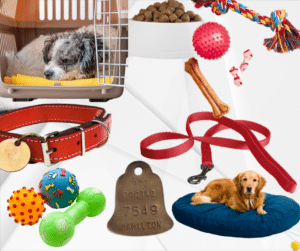
The Role of Household Rules in Training
Consistency is the backbone of successful training. Imagine this: one person in the household allows the dog on the sofa, while another scolds them for it. Confusion leads to stress and slower learning. Before your dog comes home, sit down with everyone in the house and agree on rules. Are there areas the dog shouldn’t access? What will be their feeding schedule? Are they allowed on furniture, or should they stay off? These seemingly small decisions have a big impact on your dog’s understanding of what’s acceptable.
It’s equally important to stick to these rules. Dogs thrive on consistency. If they’re allowed to break a rule occasionally, they may struggle to understand boundaries. For example, if a dog is sometimes permitted to jump on guests and other times scolded for it, they’ll become confused and anxious. Setting clear and unwavering rules helps your dog feel secure and builds a foundation for effective training.
Common mistakes include changing rules midway or failing to enforce them consistently. Dogs are quick learners, but only if you’re clear and predictable in your expectations. Think of rules as the foundation for a stress-free home and effective dog training in Hamilton. Over time, these boundaries create an environment where your dog knows exactly what to do, reducing stress for both you and your pet.
Planning Your Dog’s Routine Beforehand
Dogs thrive on routine. Just like humans, they feel secure when they know what to expect. Before bringing your dog home, map out a schedule for meals, walks, training sessions, and rest. A predictable structure reduces anxiety and makes transitions smoother. For instance, feeding your dog at the same times daily helps regulate their digestion, while scheduled walks burn off excess energy and prevent behavioural issues.
Balancing training, play, and rest is essential. Puppies especially need downtime to process what they’ve learned. Overloading them can lead to frustration and slower progress. With a solid routine, you’ll find dog training in Hamilton becomes a more enjoyable and manageable process.
The Importance of Basic Training Knowledge
Training your dog isn’t just about teaching cues; it’s about building communication. Dogs speak through a rich tapestry of body language that often goes unnoticed. For example, a wagging tail doesn’t always mean a dog is happy. It could indicate excitement, uncertainty, or even stress, depending on how it’s carried. Recognising these subtle signals allows you to respond appropriately, preventing misunderstandings and strengthening your bond.
Understanding how dogs perceive the world is crucial too. Dogs rely heavily on scent and tone. A soothing tone can calm an anxious dog, while an upbeat one can encourage enthusiasm during training sessions. Matching your approach to your dog’s temperament ensures they feel supported and understood.
Positive reinforcement is another cornerstone of effective training. Rewarding good behaviour with treats, toys, or praise motivates your dog to repeat those actions. Avoid punishment, as it can lead to fear and a breakdown of trust. Instead, redirect unwanted behaviour and focus on reinforcing the desired outcome. For example, if your dog jumps up on guests, teach them to “sit” instead, rewarding them for staying calm.
First-time dog owners often underestimate the value of patience. Progress may be slow, but consistency is key. Remember, each dog learns at their own pace. If you’re finding it challenging, K9 Principles is here to support you. With our expertise in Hamilton dog training, we’ll help you navigate the journey with confidence, ensuring you and your dog succeed together.
The First 24 Hours: Setting the Tone
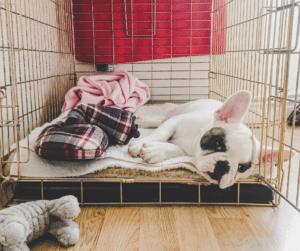
Your dog’s first day at home sets the tone for your relationship. Keep things calm and low-pressure. Avoid overwhelming them with visitors or too many new experiences. Instead, let them explore at their own pace. Introduce them to their crate early, making it a positive experience by offering treats and toys inside. This helps them view the crate as a safe haven rather than a place of confinement.
Begin the routine immediately. Feed them at set times, take them outside for bathroom breaks, and introduce a simple cue like “Sit.” These small steps establish structure and trust from the start, forming a strong base for dog training in Hamilton.
Long-Term Training Success
Training doesn’t stop once your dog learns the basics—it’s a lifelong journey that evolves with your dog’s age, temperament, and experiences. Long-term success hinges on maintaining a commitment to your dog’s growth and continuing to build on the foundation you’ve established.
Socialisation remains a key component of long-term training. Exposing your dog to a variety of environments, people, and animals helps them remain adaptable and well-behaved in diverse situations. It’s not just about avoiding fear or aggression—it’s about cultivating confidence and resilience. Start with controlled introductions in low-stress environments and gradually expand to more complex scenarios, such as busy parks or pet-friendly events.
Mental stimulation is equally important. Bored dogs can develop undesirable behaviours, such as excessive barking or chewing. Interactive toys, puzzle feeders, and advanced cues keep their minds engaged. Incorporate short, frequent training sessions into your routine to reinforce existing skills and introduce new ones. Dogs love to learn, and regular mental challenges strengthen your bond and prevent stagnation.
Finally, don’t hesitate to seek professional help if you encounter challenges. K9 Principles specialises in Hamilton dog training and offers tailored solutions for every stage of your dog’s life. Whether you’re addressing specific behavioural issues or looking to enhance your dog’s skillset, professional guidance can be invaluable in ensuring long-term success.
With dedication, patience, and the right resources, you’ll enjoy a lifetime of harmony with your dog. Long-term training is not just about teaching your dog to obey—it’s about fostering a relationship built on trust, respect, and mutual understanding. Together, you and your dog can navigate every stage of life with confidence and joy.
Conclusion:
Training your dog starts the moment you decide to bring them into your life. By preparing your home, gathering the right tools, and learning about their unique needs, you’re setting the stage for a lifetime of success. With patience, consistency, and a little help from K9 Principles, you’ll build a bond that lasts forever. Remember, the journey of training is as rewarding as the destination. Effective dog training in Hamilton begins with you.
And if you ever feel stuck, K9 Principles is here to help. Our expertise in Hamilton dog training ensures that you and your dog are always on the path to success.
- Name: K9 Principles
- Address: Haldimand County, Greater Hamilton Area, Burlington, and Most of Norfolk County
- Phone: 289 880-3382
- Email: k9principlesinc@gmail.com
- Website: www.k9principles.ca
FAQs
-
A. Training can start as early as eight weeks old. Puppies are like sponges, absorbing everything around them.



